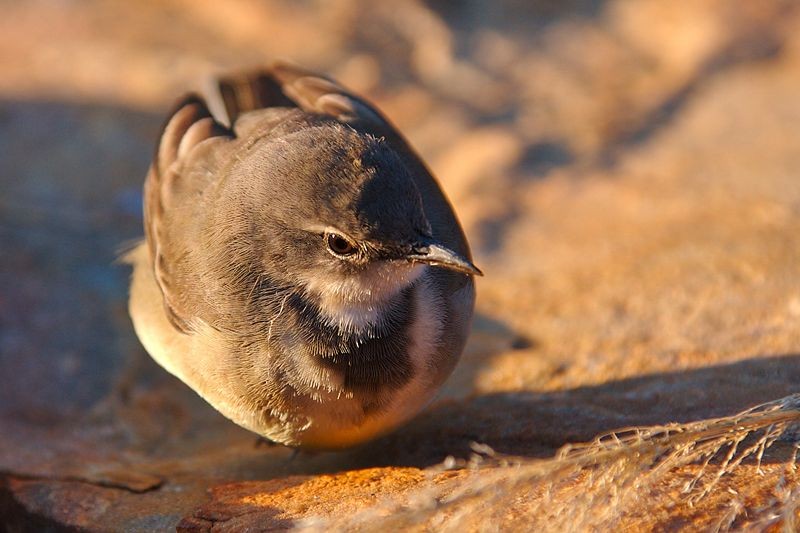Cape Wagtail
A species of Wagtails Scientific name : Motacilla capensis Genus : Wagtails
Cape Wagtail, A species of Wagtails
Botanical name: Motacilla capensis
Genus: Wagtails
Content
Description People often ask General Info
 Photo By User:Dawidl , used under CC-BY-SA-2.5 /Cropped and compressed from original
Photo By User:Dawidl , used under CC-BY-SA-2.5 /Cropped and compressed from original Description
The Cape wagtail is a rather dull plumaged and relatively short tailed wagtail with olive grey upperparts and face with a buff supercilium and dark lores. The underparts are creamy white and may show a faint pinkish wash on the lower breast and belly. The breast band is dusky and the sides of the breast and the flanks are olive-grey. The brownish black wings have pale edges to the feathers and the tail is blackish with the two outer tail feathers being white. The juveniles are similar to the adults but browner above and yellower below. 
Size
21 cm
Nest Placement
Ground
Feeding Habits
Cape Wagtail consumes a varied diet including insects like flies, midges, and beetles, crustaceans, snails, and occasionally small fish. Cape Wagtail also scavenges household scraps. Feeding behavior involves foraging on mud and grasslands, wading in water, making aerial sallies, and sometimes joining flocks.
Habitat
Cape Wagtail typically thrive in diverse habitats associated with water bodies and open ground. Broadly found in eastern and southern African highlands, they inhabit urban areas such as parks and gardens, as well as farms, villages, and coastal regions with both sandy and rocky shores. Cape Wagtail also frequents wetlands, including riverbanks, stream edges, and waterlogged fields, even adapting to human-altered landscapes like sewage farms and lawns. These birds are generally observed at altitudes up to 3000 meters, with a preference for highland regions above 2000 meters in East Africa.
Dite type
Insectivorous
People often ask
General Info
Feeding Habits
Bird food type
Behavior
The Cape wagtail's main food is invertebrates foraging is mainly on the ground or in shallow water, often feeding on animals that are already dead. It has been recorded taking insects attracted to lights in the early morning or caught in car radiators. Other than insects it has been recorded as eating fiddler crabs, sandhoppers, snails, ticks, tadpoles, small fish, small chameleons and human food. The Cape wagtail is a monogamous, territorial solitary nester and breeding pairs stay together over a number of breeding seasons. Like many territorial birds the males often fiercely attack their own reflection in mirrors or windows. The nest is built by both sexes and consists of a cup made of a wide range of materials, both natural and artificial, which is lined with hair, rootlets, wool and feathers. The nest is situated in a recess within a steep bank, tree, bush or frequently sited in a man-made site, such as a hole in a wall, pot plant or bridge. It breeds all year round but, egg-laying peaks from July until December. One to five eggs are laid, which both sexes incubate for 13–15 days. Once hatched the chicks are fed by both parents, until they leave the nest after 14–18 days. Once fledged they adults continue to feed them for another 20–25 days, and the young become fully independent after 44 days from fledging, occasionally up to 60 days. It has been recorded as host of the following brood parasites diderick cuckoo Chrysococcyx caprius, Jacobin cuckoo Clamator jacobinus and Levaillant's cuckoo Clamator levaillantii. Predators include the rufous-breasted sparrowhawk Accipter rufiventris, as well as cats and rats Rattus spp. 
Distribution Area
Cape wagtails are found in eastern and southern Africa from Uganda, the eastern DRCongo and Kenya, through Zambia and Angola to southern Africa, south to the Western Cape and the Cape of Good Hope. Cape wagtails can be found in almost any habitat that has open ground adjacent to water, and also along the rocky coastline, in farms, villages, cultivated land, parks, gardens and urban centres. In east Africa it is generally found above 2,000 m (6,600 ft) in altitude. 
Species Status
Not globally threatened.
Scientific Classification
Phylum
Chordates Class
Birds Order
Perching birds Family
Wagtails Genus
Wagtails Species
Cape Wagtail